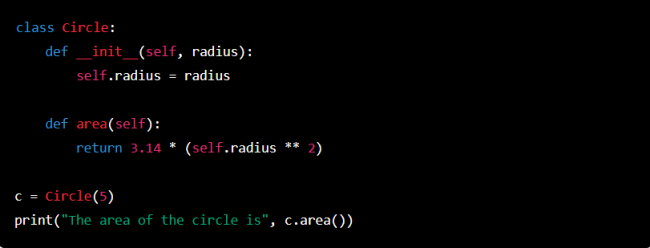Python is a high-level, interpreted programming language that is widely used for web development, data analysis, artificial intelligence, and scientific computing. It is known for its simplicity, readability, and versatility, making it a popular choice for beginners and experienced programmers alike.
One of the main benefits of Python is its readability. The language uses indentation to indicate code blocks, rather than curly braces or keywords, making it easy to understand and write. Additionally, Python has a large standard library, which provides a wide range of functionality, including data types, modules, and libraries, without the need to install additional software.
Python also has a wide range of applications. For example, it can be used for web development with frameworks such as Django and Flask, data analysis with libraries like NumPy and pandas, artificial intelligence with libraries like TensorFlow and Keras, and scientific computing with libraries like SciPy and Matplotlib.
Here is an example of a simple “Hello, World!” program in Python:

Python also supports object-oriented programming, which allows for the creation of reusable code and encapsulation of data. Here is an example of a simple class that represents a circle:

In this example, the class Circle has one attribute, radius, and one method, area(), which calculates and returns the area of the circle. An object of the class Circle is created with a radius of 5, and the area is calculated and printed to the screen.
Python also has a strong community, with a wide range of resources and libraries available for learning and problem-solving. There are many tutorials, books, and online courses available to help new programmers get started, and the Python Software Foundation maintains the Python Enhancement Proposals (PEPs) to guide the development of the language.Python is used in a wide range of fields, including:
1) Web Development: Python frameworks such as Django and Flask are commonly used for building web applications and backend services.
2) Data Science and Machine Learning: Python libraries like NumPy, pandas, and scikit-learn are widely used for data analysis, visualization, and machine learning tasks.
3) Artificial Intelligence: Python libraries like TensorFlow, Keras, and PyTorch are commonly used for building neural networks and other AI models.
4) Scientific Computing: Python libraries like SciPy, Matplotlib, and Scikit-image are used in a variety of scientific fields, including physics, chemistry, biology, and engineering.
5) Finance: Python is widely used in finance for quantitative analysis and modeling, risk management, and algorithmic trading.
In conclusion, Python is a powerful, versatile, and easy-to-learn programming language that is widely used in a variety of fields. Its readability, wide range of applications, and strong community make it a great choice for beginners and experienced programmers alike. This is just a brief introduction to the language, and there is much more to learn and explore.For python interview questions and answers go through this collection.
